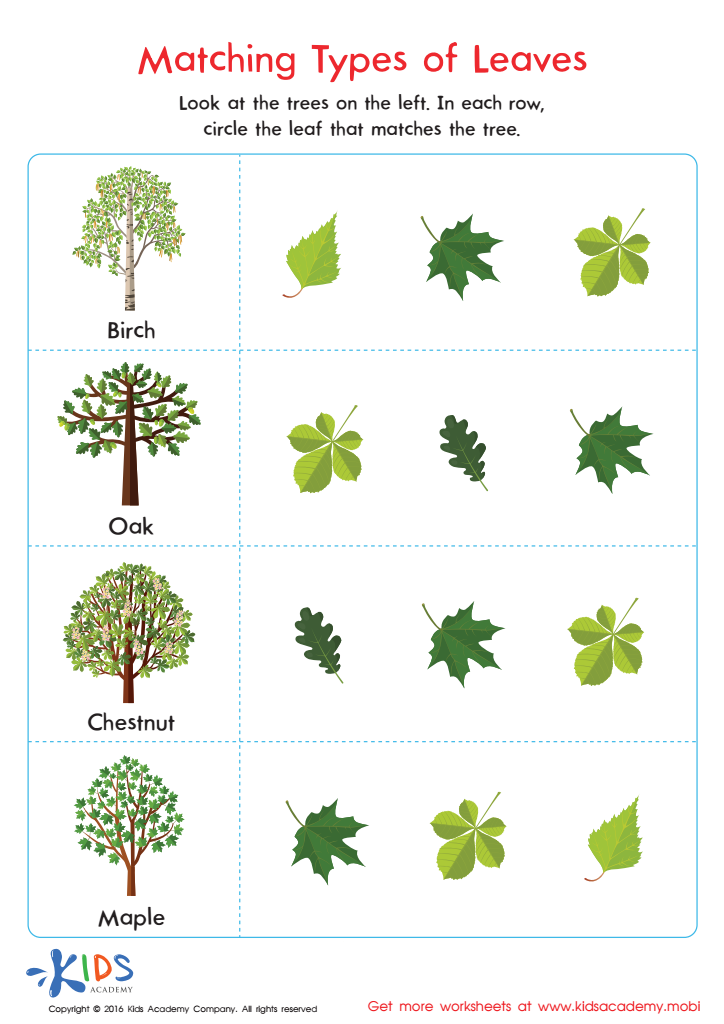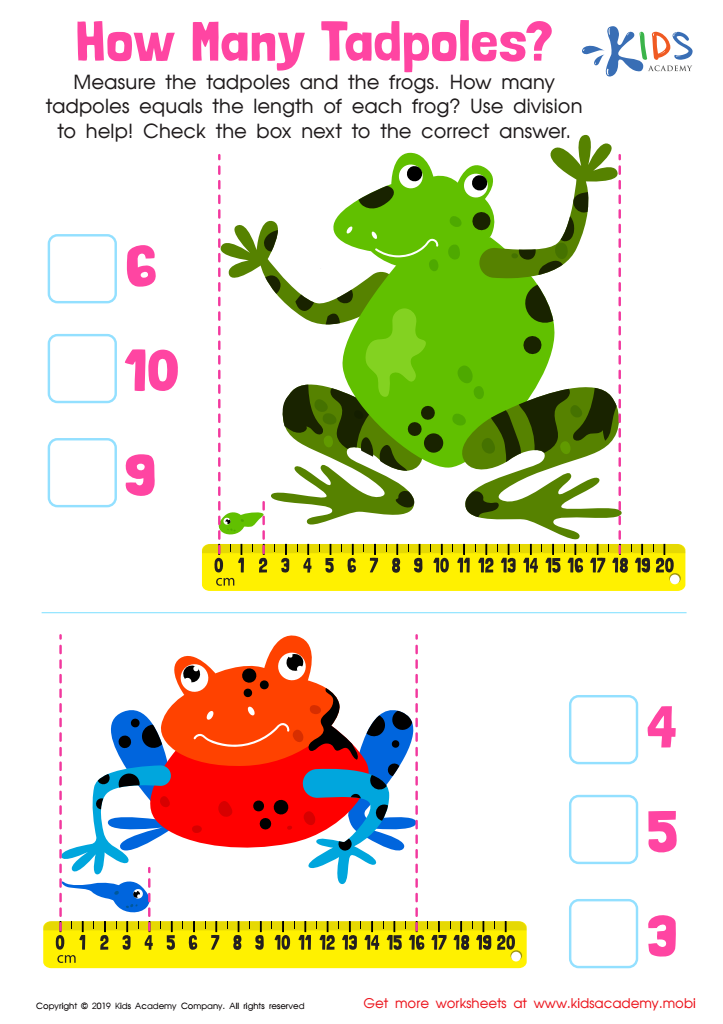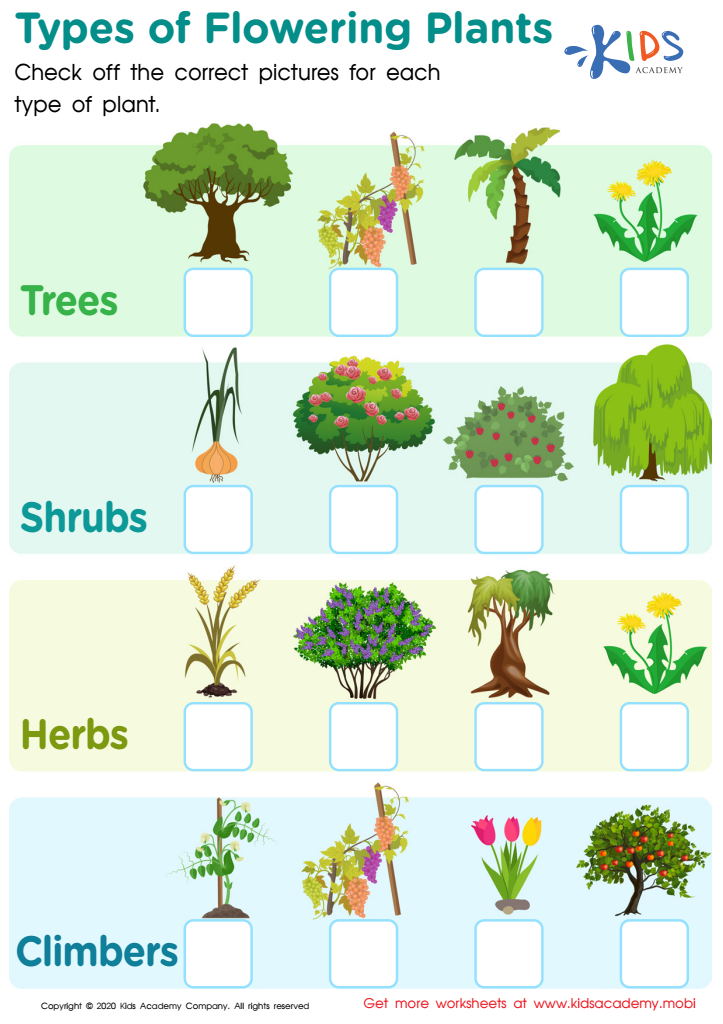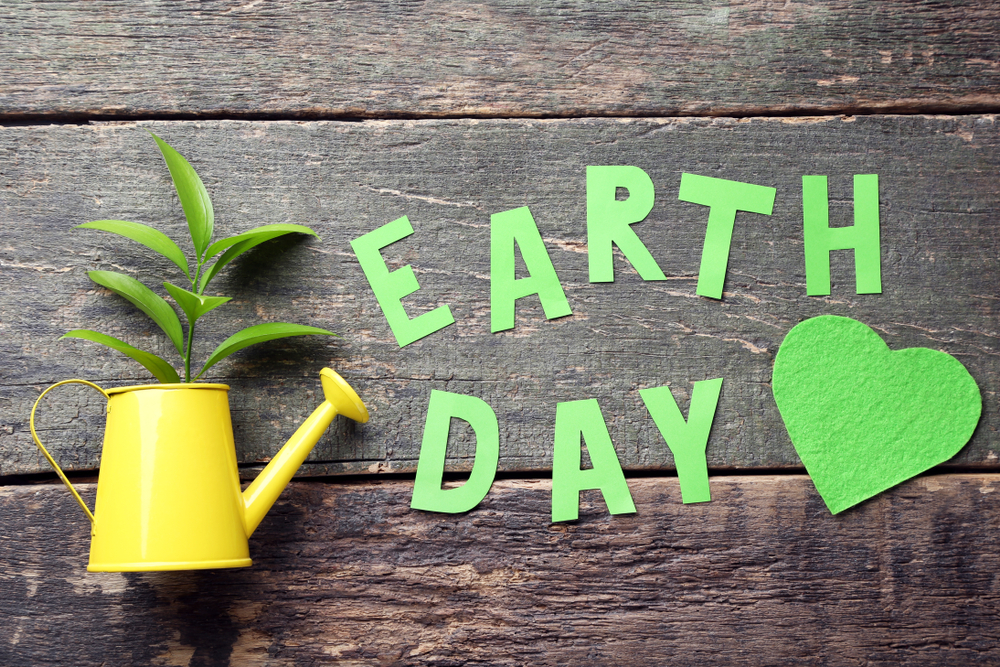Observation skills Normal Plants and Animals Worksheets for Ages 5-8
3 filtered results
-
From - To
Enhance your child's observation skills with our engaging "Normal Plants and Animals Worksheets" designed for ages 5-8. These worksheets encourage young learners to explore their environment by closely examining various plants and animals. Through interactive activities, children will develop vital observation skills, learning to identify key characteristics and differences within nature. Our resources promote critical thinking and foster a love for science, making learning fun and accessible. Perfect for both classroom use and at-home learning, these worksheets are easy to download and print. Nurture your child’s curiosity and help them connect with the natural world today!


Matching Types of Leaves Printable


How Many Tadpoles Worksheet


Types of Flowering Plants Worksheet
Observation skills are essential for children aged 5-8 as they lay the foundation for critical thinking and scientific inquiry. For parents and teachers, fostering these skills is crucial in helping children connect with the world around them. When children learn to carefully observe normal plants and animals, they develop a sense of curiosity and appreciation for nature. This engagement encourages them to ask questions and seek answers, promoting active learning.
Moreover, honing observation skills aids in enhancing vocabulary and language development. As children describe what they see—such as the colors of leaves or the behaviors of animals—they expand their linguistic abilities and expressiveness. Observation also cultivates patience and mindfulness, qualities that are invaluable across various life situations.
Practicing observation in nature can also encourage cooperative play and teamwork. Children who explore together learn to share their findings, fostering communication and social interactions. Additionally, this hands-on learning experience can inspire a love for science, motivating children to pursue further education in natural sciences as they grow.
In conclusion, supporting observation skills in normal plants and animals empowers children, enriches their educational experiences, and nurtures a lifelong connection to the environment. It’s an investment in their holistic development.
 Assign to My Students
Assign to My Students


















